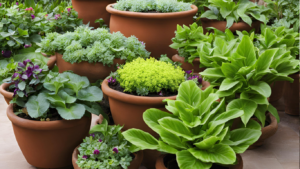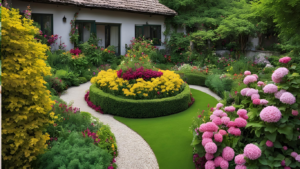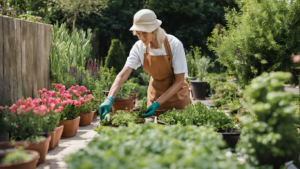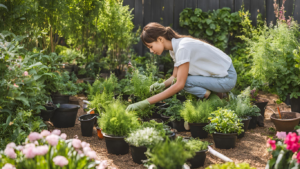- Bring Your Garden to Life with Ornamental Plants
- Best Ornamental Plants to Elevate Your Garden’s Beauty
- How to Arrange Ornamental Plants in a Small Garden
- Low Maintenance Ornamental Plants for Beginners
- How to Choose the Right Ornamental Plants for Your Yard
- Benefits of Using Ornamental Plants in Home Gardens
Bring Your Garden to Life with Ornamental Plants
A garden isn’t just a patch of greenery it’s an extension of your home, your style, and your personality. The right ornamental plants can turn a dull backyard into a lush paradise, adding layers of color, texture, and structure to your garden design. Whether you’re working with a small garden or a sprawling landscape, selecting the right decorative plants ensures a vibrant, welcoming space. Plus, many low maintenance ornamental plants make it easy for beginners to keep their garden looking fresh without too much effort. Want to create a space that’s both stunning and easy to care for? Let’s dive into the best ways to choose, arrange, and maintain garden plants for a breathtaking outdoor retreat.
Best Ornamental Plants to Elevate Your Garden’s Beauty

If you want to create a stunning garden design, choosing the right ornamental plants is key. The perfect mix of flowering plants, foliage plants, and low maintenance garden plants can add texture, color, and personality to your outdoor space. From vibrant roses and hydrangeas to lush ferns and snake plants, each selection plays a role in elevating your landscape. If you’re working with a small garden, compact options like bonsai trees and succulents can bring charm without overwhelming the space. With the right decorative plants, your backyard can become a lush, inviting retreat that requires minimal upkeep but delivers maximum impact.
Top Flowering Plants to Brighten Your Garden
Nothing makes a garden pop like colorful flowering plants. Roses, lavender, and hibiscus add elegance and a sweet fragrance, making them perfect for pathways or focal points. If you’re looking for low maintenance plants, marigolds, petunias, and geraniums are great choices—they thrive in various climates and require minimal care. Adding seasonal blooms ensures your garden stays lively year-round, with spring tulips, summer sunflowers, and autumn chrysanthemums bringing continuous beauty.
Best Foliage Plants for Texture and Depth
While flowers steal the spotlight, foliage plants are the backbone of a well-balanced garden design. Plants like hostas, caladiums, and elephant ears provide bold textures and striking colors that complement flowering varieties. If you’re aiming for a tropical look, palms and banana plants add an exotic touch. For a modern and minimalist feel, snake plants and ZZ plants offer sleek greenery with almost zero maintenance. Pairing decorative plants with the right garden layout will ensure a visually stunning and harmonious space.
How to Arrange Ornamental Plants in a Small Garden

Having a small garden doesn’t mean you have to compromise on beauty. With smart garden design techniques, you can maximize space and create a lush, inviting environment. The key is selecting compact ornamental plants that thrive in small areas while using vertical gardening, layered planting, and strategic placement to make the space feel larger. Whether you’re working with container plants, hanging gardens, or raised beds, thoughtful arrangement ensures every inch of your garden is utilized effectively.
Utilizing Vertical Space for Maximum Impact
When space is limited, think upwards! Vertical gardening allows you to grow ornamental plants without sacrificing ground space. Use hanging pots, wall mounted planters, or trellises for climbing plants like jasmine, morning glory, or ivy. If you’re designing a balcony garden, consider stacking planters or using shelves to create layers of greenery. This method adds depth while keeping your space neat and organized.
Layering Plants for a Balanced Look
A well-structured garden layout includes plants of varying heights to create a sense of depth. Place taller decorative plants like dwarf palms or banana plants at the back, medium-height options such as ferns or caladiums in the middle, and low-growing plants like succulents or moss at the front. This layered approach ensures that every plant gets enough sunlight while making your small garden look fuller and more dynamic.
Low Maintenance Ornamental Plants for Beginners

Having a small garden doesn’t mean you have to compromise on beauty. With smart garden design techniques, you can maximize space and create a lush, inviting environment. The key is selecting compact ornamental plants that thrive in small areas while using vertical gardening, layered planting, and strategic placement to make the space feel larger. Whether you’re working with container plants, hanging gardens, or raised beds, thoughtful arrangement ensures every inch of your garden is utilized effectively.
Utilizing Vertical Space for Maximum Impact
When space is limited, think upwards! Vertical gardening allows you to grow ornamental plants without sacrificing ground space. Use hanging pots, wall mounted planters, or trellises for climbing plants like jasmine, morning glory, or ivy. If you’re designing a balcony garden, consider stacking planters or using shelves to create layers of greenery. This method adds depth while keeping your space neat and organized.
Layering Plants for a Balanced Look
A well-structured garden layout includes plants of varying heights to create a sense of depth. Place taller decorative plants like dwarf palms or banana plants at the back, medium height options such as ferns or caladiums in the middle, and low-growing plants like succulents or moss at the front. This layered approach ensures that every plant gets enough sunlight while making your small garden look fuller and more dynamic.
How to Choose the Right Ornamental Plants for Your Yard

Choosing the right ornamental plants for your yard is all about matching your garden design with plants that thrive in your environment. Whether you’re looking for colorful garden plants to create a vibrant scene or low maintenance landscaping plants to simplify your care routine, it’s important to consider factors like climate, soil type, and sunlight. By selecting plants that naturally suit your yard’s conditions, you can create a lush, beautiful garden that feels effortless. Let’s break down how you can choose the perfect decorative plants for your outdoor space!
Factors to Consider When Choosing Garden Plants
When selecting garden plants for your yard, consider how much sunlight your space gets. Full sun plants, like lavender or roses, will thrive in bright spots, while shade loving ornamental plants like ferns or hostas are perfect for those darker corners. Soil type matters too certain plants prefer well-drained soil, while others love moisture-rich areas. For instance, if you have a rocky or dry area, succulents and cacti are the best bet. Knowing these needs will help you pick plants that will flourish and make your garden truly stand out.
Choosing Plants Based on Aesthetic and Function
Beyond functionality, think about the aesthetic you want to achieve. Do you want a tropical feel with lush foliage, or are you more into a minimalist, modern design? For a modern garden design, you might prefer architectural plants like agave or ornamental grasses. If you’re looking to add texture and color, consider flowering plants like hydrangeas or daylilies. Don’t forget to mix heights and textures—combining shrubs, ground covers, and flowering plants can create a balanced and visually striking garden that’s full of life!
Benefits of Using Ornamental Plants in Home Gardens
Incorporating ornamental plants into your home garden can transform your space into a vibrant, peaceful retreat. Not only do these decorative plants add visual appeal, but they also offer a variety of functional benefits. From improving air quality to enhancing your garden design, ornamental plants can bring both beauty and practicality to your outdoor space. By selecting the right landscaping plants, you can create a harmonious, stress-free environment that reflects your personal style while boosting your well-being.
Enhancing Aesthetic Appeal and Curb Appeal
One of the biggest benefits of using ornamental plants is their ability to enhance the aesthetic of your garden. Whether you prefer a sleek, modern garden design or a more rustic look, garden plants can help you create the perfect vibe. Adding colorful flowers, unique textures, and varying plant heights gives your garden more visual interest. The right combination of landscaping plants also improves your home’s curb appeal, which can increase its value and make a lasting impression on guests.
Health and Environmental Benefits of Ornamental Plants
Aside from making your garden look beautiful, ornamental plants also provide numerous health and environmental benefits. Many decorative plants, like succulents, ferns, or flowers, help improve indoor and outdoor air quality by absorbing toxins and releasing oxygen. Additionally, planting low maintenance garden plants that attract pollinators such as bees and butterflies can create a healthier ecosystem in your yard. These environmental benefits go hand-in-hand with making your garden more sustainable while supporting local wildlife.
Conclusion
Incorporating ornamental plants into your home garden isn’t just about adding a pop of color it’s about creating a space that feels uniquely yours. Whether you’re selecting landscaping plants for their texture or choosing decorative plants to boost your garden design, these beautiful additions can elevate the aesthetic and functionality of your outdoor space. Remember, the key to a thriving garden is selecting the right garden plants that align with your vision, climate, and maintenance preferences. From low-maintenance options for beginners to high-impact plants for seasoned gardeners, the possibilities are endless. Ready to get started? Take the first step toward transforming your garden by picking the right ornamental plants, and watch your outdoor space come to life.
